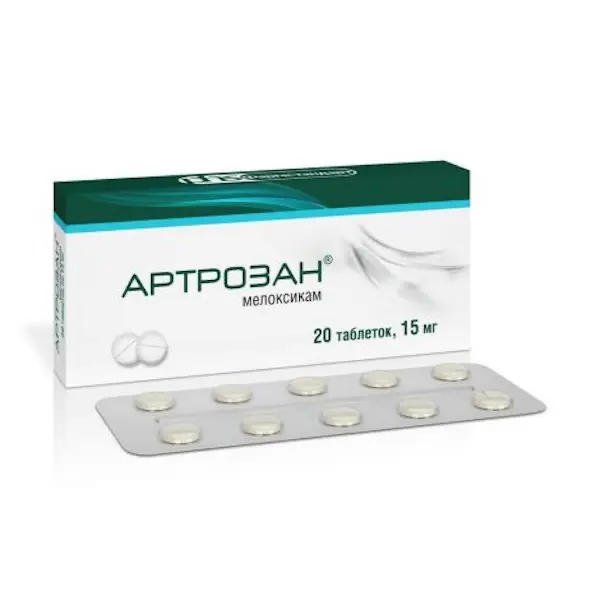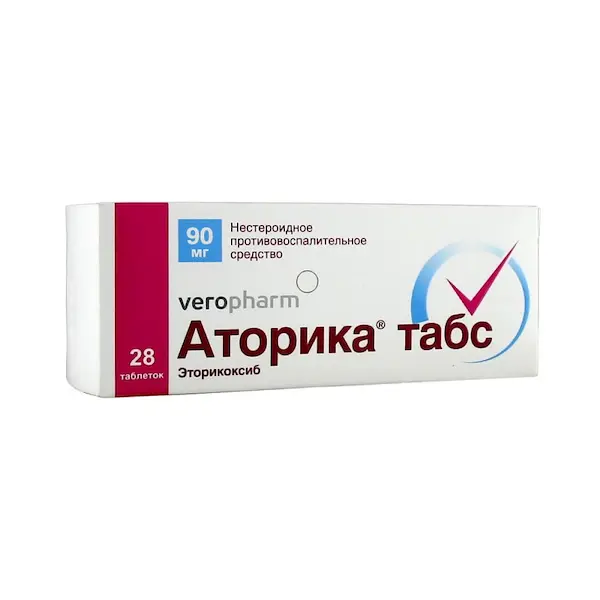Description
Arthrozan Pharmacodynamics
Arthrosan® is a non-steroidal anti-inflammatory drug (NSAID) with anti-inflammatory, antipyretic and analgesic effect.
It belongs to the class of oxycams and is a derivative of enolic acid.
The mechanism of action is related to inhibition of prostaglandin synthesis as a result of selective inhibition of enzymatic activity of cyclooxygenase type 2 (COX-2), which participates in biosynthesis of prostaglandins in inflammation area. When prescribed in high doses, prolonged use and individual characteristics of the body, selectivity against COX-2 is reduced. To a lesser extent, it acts on cyclooxygenase type 1 (COX-1), which is involved in the synthesis of prostaglandins that protect the mucosa of the gastrointestinal tract and is involved in the regulation of blood flow in the kidneys. Due to the above selective inhibition of COX-2 activity, the drug less often causes erosive-ulcerative lesions of the gastrointestinal tract.
Indications
Symptomatic therapy:
– Osteoarthritis (osteoarthritis, degenerative joint disease), including with a pain component;
– rheumatoid arthritis;
– ankylosing spondylitis.
Contraindications .
– Hypersensitivity to meloxicam or excipients of the drug;
– Heart failure in decompensation stage;
– Early postoperative period after coronary aortic bypass surgery;
– Complete or incomplete combination of bronchial asthma, recurrent polyposis of the nose and sinuses and intolerance to acetylsalicylic acid or other NSAIDs (including history);
– Exacerbation of gastric and duodenal ulcer; active gastrointestinal bleeding;
– Inflammatory bowel disease (ulcerative colitis, Crohn’s disease in the acute stage);
– Cerebrovascular bleeding or other bleeding;
– Severe liver failure or active liver disease;
– Chronic renal failure (in patients not undergoing hemodialysis (creatinine clearance less than 30 ml/min); Advanced renal disease, including confirmed hyperkalemia;
– Childhood under 15 years of age;
– Pregnancy; Breast-feeding period;
– Lactose intolerance, lactase deficiency and glucose-galactose malabsorption.
Dosage and administration
- The drug is taken orally with meals in a daily dose of 7.5-15 mg.
- Recommended dosing regimen:
– Rheumatoid arthritis: 15 mg per day. If necessary, the dose can be reduced to 7.5 mg per day.
– Osteoarthritis, osteochondrosis and other inflammatory and degenerative diseases of the musculo-articular system accompanied by pain syndrome: 7.5 mg per day. If ineffective, the dose may be increased to 15 mg per day.
– Ankylosing spondylitis: 15 mg per day. - The maximum daily dose should not exceed 15 mg.
- In patients with increased risk of side effects and in patients with significant renal failure who are on hemodialysis, the dose should not exceed 7.5 mg daily.





